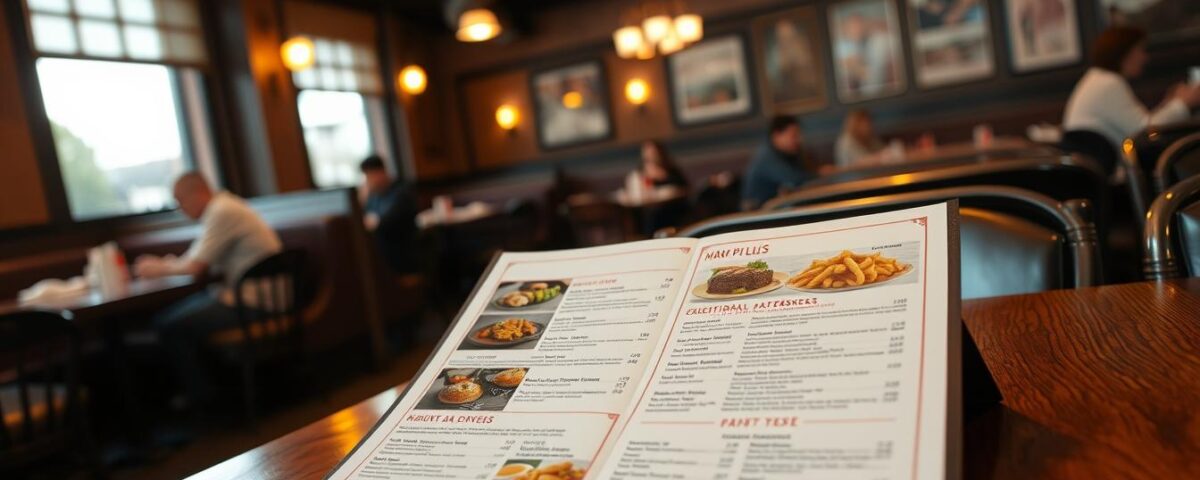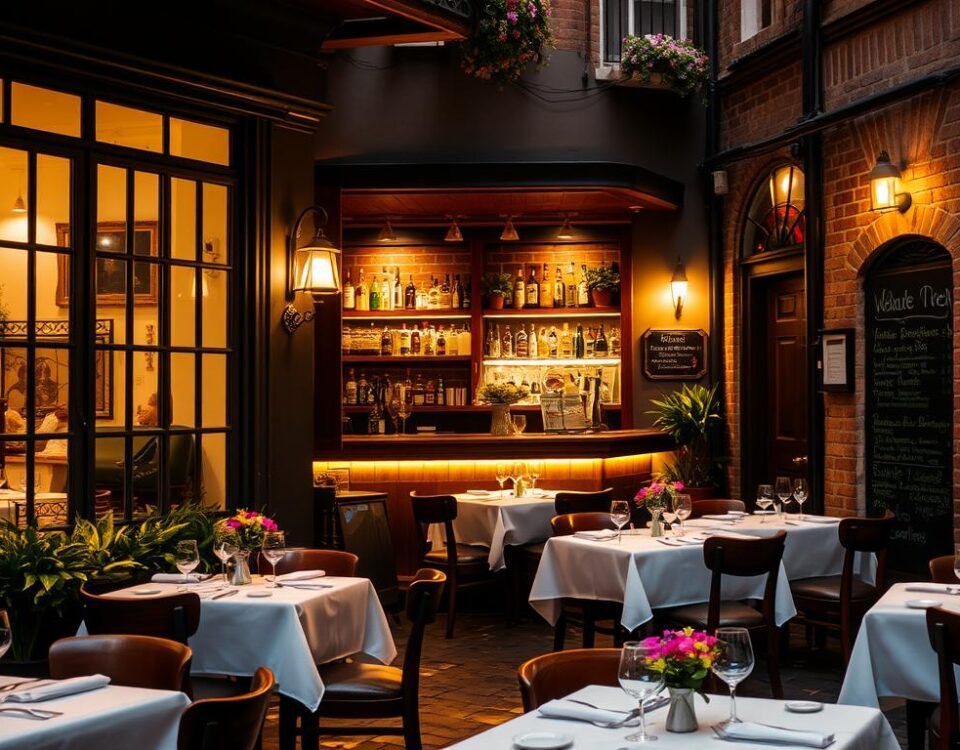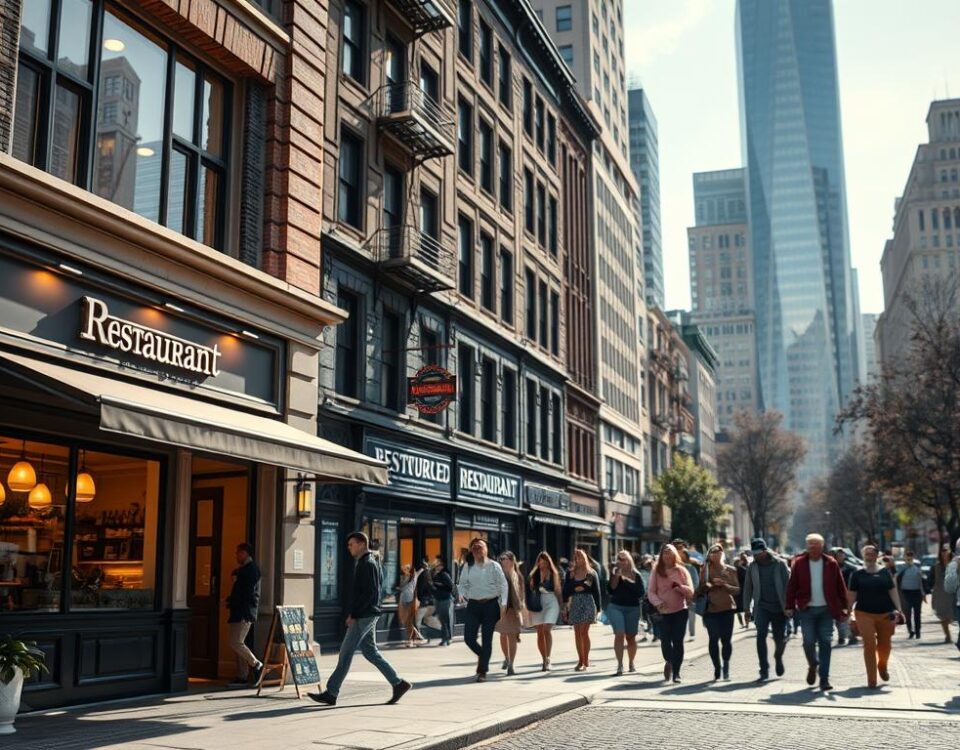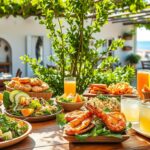
Top 10 Summer Menu Ideas to Refresh Your Restaurant’s Offerings
July 25, 2025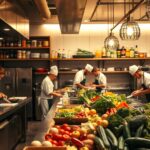
6 Proven Tips to Reduce Food Waste Without Hurting Quality
July 27, 2025As a restaurateur, I’ve seen firsthand how a well-designed menu can make all the difference in boosting sales. But what makes a menu truly effective?
Studies show that customers spend an average of just 109 seconds looking at a menu before making a decision. This is where menu engineering comes in – combining psychology and design to guide customers toward high-profit items.
By applying simple yet powerful psychology tricks, you can significantly impact your restaurant’s bottom line. In this article, I’ll share six hidden techniques to help you optimize your menu layout and increase sales.
Key Takeaways
- Understand how menu psychology affects customer spending.
- Learn how to design a menu that prompts customers to order without considering prices.
- Discover the importance of strategic menu design in influencing purchasing decisions.
- Find out how menu engineering can guide customers toward high-profit items.
- Get an overview of the six hidden psychology tricks to boost sales.
The Power of Menu Psychology
The art of menu design is more than just arranging dishes; it’s about understanding the psychology behind customer choices. Studies have shown that the average restaurant guest looks at a menu for just 109 seconds before placing an order.
This brief window highlights the importance of strategic menu design in capturing the customer’s attention and driving sales.
Why Menu Design Matters More Than You Think
A well-designed menu is crucial for restaurant success. It not only showcases your offerings but also guides the customer’s decision-making process. By understanding how customers interact with your menu, you can optimize its layout to promote high-profit items and enhance the overall dining experience.
The 109-Second Decision Window
The 109-second decision window is a critical factor in menu design. With such a limited time to make a decision, customers rely on visual cues and clear information to guide their choices. Restaurants must be intentional about what catches the customer’s eye first, using techniques like strategic item placement and compelling descriptions to drive sales.
Understanding Menu Layout Psychology Tricks
Understanding the psychology behind menu layout is crucial for restaurants to boost sales. The way customers interact with a menu is influenced by various psychological factors, and being aware of these can help restaurants design menus that drive sales and enhance customer satisfaction.
What Is Menu Engineering?
Menu engineering is the process of designing a menu to maximize profitability by understanding how customers make decisions. It involves analyzing the menu’s layout, pricing, and item placement to create an optimal dining experience. By applying menu engineering principles, restaurants can increase sales and improve customer satisfaction.
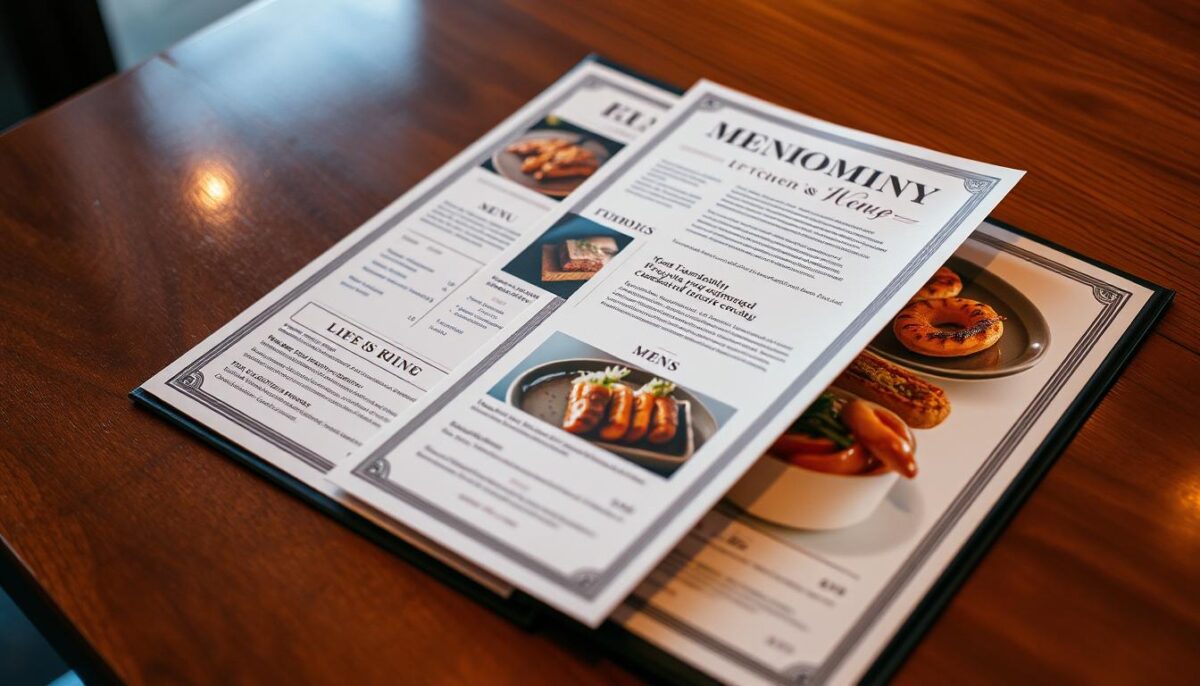
The Science Behind Customer Decision-Making
The science behind customer decision-making is complex, involving factors such as visual processing, attention patterns, and cognitive biases. Research has shown that customers tend to become overwhelmed when faced with too many choices, a phenomenon known as the “paradox of choice.” To combat this, restaurants should limit their menu options to no more than seven per section, making it easier for customers to make a decision.
- The “paradox of choice” concept explains why too many menu options can decrease sales.
- Visual processing and attention patterns play a significant role in menu item selection.
- Understanding cognitive biases can help restaurants guide customer choices.
Trick #1: Strategic Item Placement Using the Golden Triangle
The way you arrange items on your menu can significantly impact your restaurant’s bottom line. This is where the concept of the Golden Triangle comes into play.
The Golden Triangle refers to the three areas on a menu where customers tend to focus their attention: the top left corner, the top right corner, and the center. By placing your high-profit items in these areas, you can increase their visibility and, consequently, their ordering frequency.
Mapping the Customer’s Eye Movement
Understanding how customers scan a menu is crucial for effective menu engineering. Research has shown that when people look at a menu, their eyes tend to move in a triangular pattern, focusing on the top left, top right, and center areas. By placing your most profitable items within this Golden Triangle, you can draw attention to them and encourage customers to order.
Positioning Your High-Profit Items for Maximum Visibility
To maximize the visibility of your high-profit items, place them at the top of the list in each section and one at the bottom. This strategy leverages the “primacy and recency effect,” where customers are more likely to order the first and last items they see in a list. By doing so, you can increase the chances of your most profitable items being ordered.
| Menu Section | High-Profit Item Placement |
|---|---|
| Appetizers | Top: Fried Calamari, Bottom: Bruschetta |
| Entrees | Top: Grilled Salmon, Bottom: Steak Frites |
By applying these strategies, you can optimize your menu layout to boost sales and increase profit. Effective menu engineering is about understanding customer behavior and using that knowledge to guide your design decisions.
Trick #2: The Art of Menu Description and Language
Effective menu descriptions can elevate the dining experience and increase sales. The way you describe your dishes on the menu plays a crucial role in enticing customers and driving sales.
Using Nostalgic and Evocative Language
Using nostalgic and evocative language in your menu descriptions can transport customers to a different time and place, making your dishes more appealing. Adjectives like “line-caught,” “farm-raised,” or “locally-sourced” not only add a touch of authenticity but also increase the perceived value of your menu items.
How Detailed Descriptions Increase Perceived Value
Detailed menu descriptions can significantly impact how customers perceive the value of your dishes. According to a Cornell University study, longer, more detailed descriptions can increase sales by up to 30% without changing the dish itself. This is because descriptive language creates a perception of higher value, justifying premium pricing in customers’ minds.
| Description Type | Example | Impact on Sales |
|---|---|---|
| Basic | Grilled Chicken | Low |
| Detailed | Herb-crusted, free-range grilled chicken breast served with roasted vegetables | High |
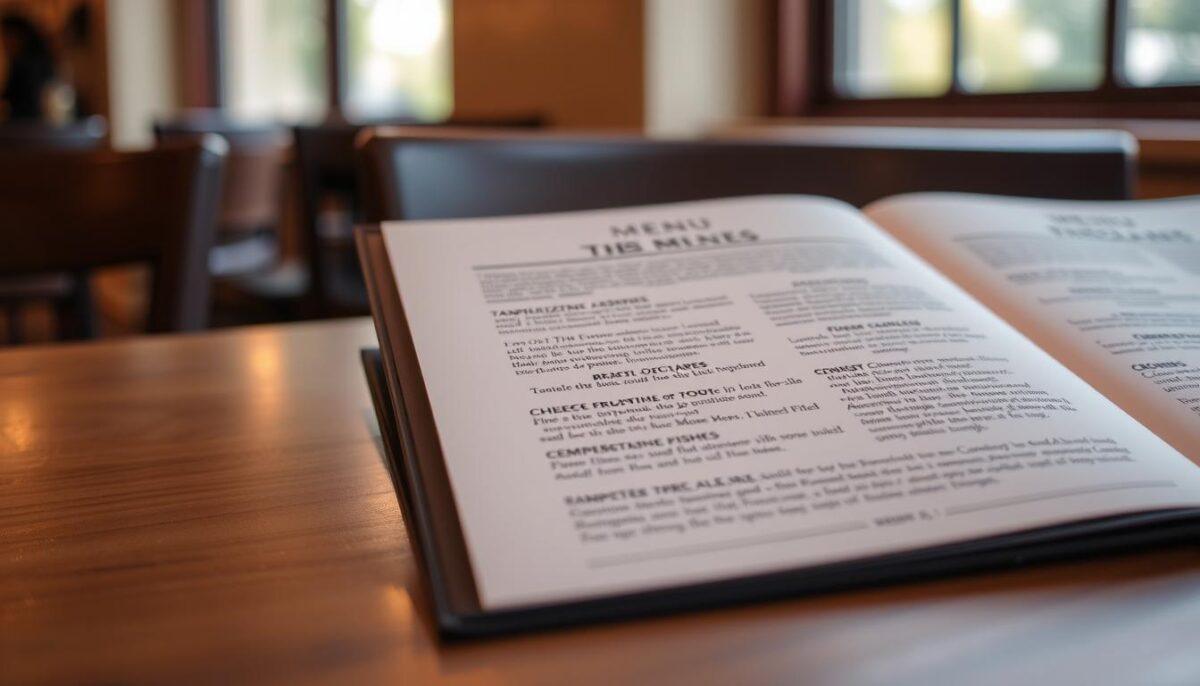
By incorporating specific descriptive adjectives like “hand-selected,” “slow-roasted,” or “house-made,” you can significantly increase the perceived value of your menu items. This not only enhances the dining experience but also justifies higher pricing, ultimately boosting your sales.
Trick #3: Price Psychology and Presentation
Price psychology is a powerful tool in menu engineering, affecting how customers perceive value. The strategic presentation of prices can significantly influence purchasing decisions, making it a crucial aspect of menu design.
The Price Nesting Method
The Price Nesting Method involves grouping menu items by price, creating a visual hierarchy that guides the customer’s choice. By nesting high-profit items among other similarly priced options, you can make them more appealing and increase sales.
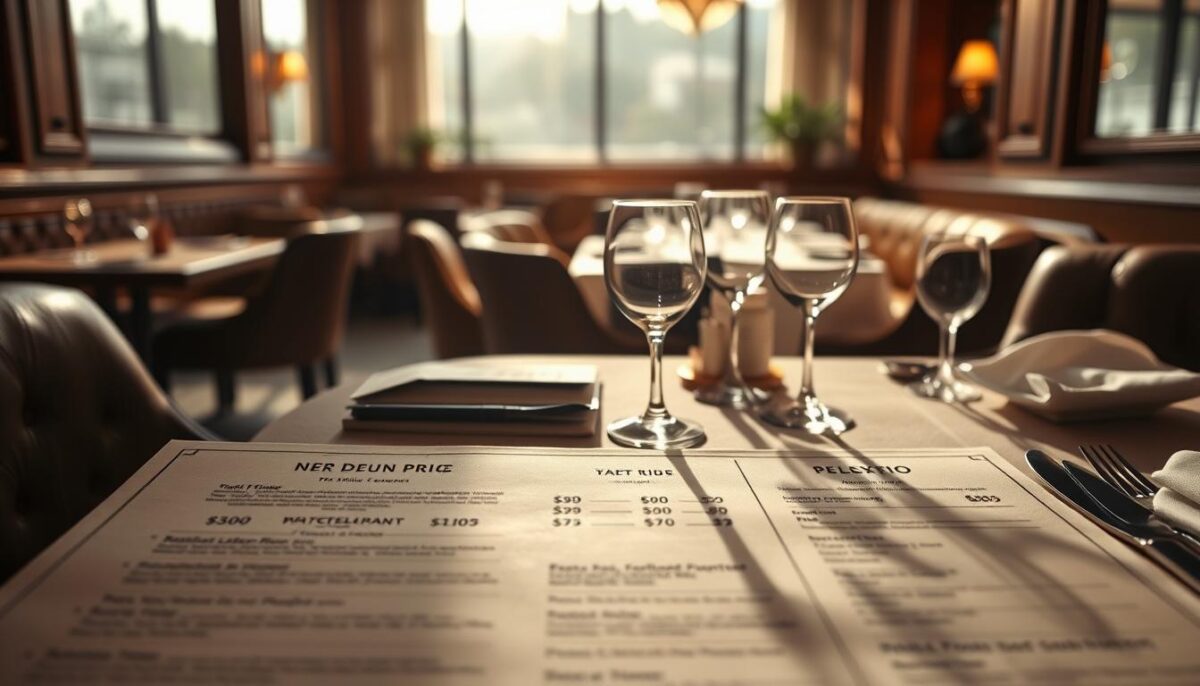
Using Decoy Items to Influence Purchasing Decisions
Using a “decoy” item is another effective strategy. By placing an overly expensive item next to a high-profit dish, the latter appears more reasonably priced by comparison. This technique creates a psychological anchor, making the high-profit items seem like better value. For instance, a $300 lobster dish can make a $70 steak appear thrifty, thus influencing the customer’s perception of price and encouraging them to order the steak.
Trick #4: Visual Highlighting and Attention Triggers
To further enhance your menu’s effectiveness, let’s explore another crucial aspect: visual highlighting and attention triggers. By using visual cues, you can guide your customers’ attention to specific menu items that are most profitable for your business.
Using Color Psychology to Stimulate Appetite
Colors can evoke emotions and stimulate appetite. By incorporating the right colors into your menu design, you can create an appealing visual experience that draws customers in. For instance, warm colors like red and orange can stimulate appetite, while cool colors like blue can create a calming effect.
Creating Visual Anchors with Negative Space
Another effective technique is to use negative space around high-profit items to create visual anchors. By putting these items in boxes or separating them from the rest of the options, you can draw the customer’s attention to them. This technique is similar to how supermarkets place profitable products at eye level. In menu design, the upper right corner is considered prime real estate, as it’s where customers tend to focus their gaze.
To implement visual highlighting effectively, consider the following strategies:
- Use boxes, borders, or icons to highlight signature dishes or high-profit items without cluttering the menu.
- Balance visual emphasis so that highlighted items stand out without making the rest of the menu seem unimportant.
- Proper spacing between menu sections creates a natural reading flow that guides customers through the menu in a strategic order.
By applying these visual highlighting techniques, you can create a design that effectively promotes your high-profit items and enhances the overall dining experience in specific areas of your restaurant.
Trick #5: Menu Sectioning and Choice Limitation
Effective menu engineering is not just about listing dishes; it’s about creating a seamless experience for the customer. By strategically sectioning your menu, you can guide customers toward higher-profit selections and simplify their decision-making process.
The Paradox of Choice: Why Less Is More
The “paradox of choice” suggests that too many options can lead to customer anxiety, ultimately resulting in decreased sales. Limiting options per category to around 7 items can help alleviate this issue. By doing so, you create a more manageable menu that allows customers to make decisions with ease.
Creating the Optimal Number of Menu Items
To determine the optimal number of items for your menu sections, consider your restaurant type and customer expectations. Menu analysis can help identify which items to keep and which to eliminate. The “rule of seven” suggests limiting each section to 5-7 items, striking a balance between variety and simplicity.
By applying these principles, you can create a menu that is both scannable and appealing, ultimately enhancing the dining experience and driving sales.
Trick #6: Strategic Use of Photos and Visual Elements
Photos and visual elements are not just aesthetic additions; they are powerful tools that can be strategically used to boost sales through your menu. In today’s digital age, a navigable website and streamlined online ordering are essential to modern restaurants.
When to Use (and Not Use) Food Photography
Food photography can be a powerful tool in menu design. Studies show that items with photos get more orders on online menus. However, the use of food photography should be strategic. For physical menus, it’s often more effective to use high-quality images sparingly to avoid overwhelming the customer.
Different Approaches for Physical vs. Online Menus
The ideal physical menu is different from the perfect online menu. For online menus, a mobile-responsive design is crucial. An interactive online menu that provides a picture when you click on a menu item is ideal. Organizing items under different tabs and keeping each tab scannable can enhance the ordering experience.
| Menu Type | Key Features |
|---|---|
| Physical Menu | Use high-quality images sparingly |
| Online Menu | Mobile-responsive design, interactive elements, and photos for menu items |
Implementing These Tricks in Your Restaurant
Now that we’ve explored the psychology behind menu design, let’s dive into how to apply these tricks to boost sales in your restaurant.
Analyzing Your Current Menu Performance
To effectively implement menu engineering techniques, start by analyzing your current menu performance. Use the Menu Matrix to categorize your menu items based on their profitability and popularity. This analysis will help you identify which items to highlight and which to reprice or remove.
Step-by-Step Menu Redesign Process
Follow this step-by-step process to redesign your menu and increase profits. First, evaluate your menu pricing based on your Menu Matrix findings. Next, highlight your high-profit items using visual elements like photos, graphics, or colored boxes. Finally, arrange your menu sections to place your high-profit items in the Golden Triangle – the top left, top right, and center areas of your menu.
Conclusion: Transforming Your Menu into a Sales Machine
To maximize your restaurant’s profits, it’s essential to understand and apply the principles of menu engineering. By leveraging the six psychology tricks outlined in this article, you can significantly boost sales and increase profitability. These strategies work together to create a comprehensive menu engineering approach that guides customers toward profitable choices without feeling manipulative.
Restaurants that utilize menu engineering have seen increases in profits by as much as 10-15 percent. By regularly analyzing and adjusting your menu, you can ensure it remains an effective marketing tool that works 24/7 to drive sales. Start by applying these tactics and watch your restaurant thrive in today’s competitive industry.
Effective menu design is crucial, and by using techniques like strategic item placement, price psychology, and visual highlighting, you can create a menu that not only attracts customers but also increases your average check size. Make menu engineering a priority to stay ahead in the restaurant industry.
FAQ
What is menu engineering, and how can it boost my restaurant’s sales?
Menu engineering is the process of optimizing your menu design to increase profitability. By applying certain psychology tricks, you can influence customer choices and drive sales.
How do I determine the most profitable items on my menu?
To identify your high-profit items, analyze your sales data and food costs. This will help you understand which dishes are generating the most revenue and profit.
What is the Golden Triangle, and how can I use it to my advantage?
The Golden Triangle refers to the area on your menu where customers tend to focus their attention. By placing your high-profit items within this region, you can increase their visibility and drive sales.
How can I use color psychology to stimulate appetite and drive sales?
Certain colors, such as red and orange, can stimulate appetite and create a positive emotional response. Use these colors strategically in your menu design to draw attention to your high-profit items.
What is the paradox of choice, and how can I apply it to my menu?
The paradox of choice suggests that too many options can overwhelm customers and lead to decision paralysis. By limiting the number of menu items, you can create a more streamlined and user-friendly experience.
Should I use photos on my menu, and if so, how?
Food photography can be an effective way to showcase your dishes and stimulate appetite. However, use them judiciously, as too many images can be overwhelming. Consider using high-quality images for your high-profit items or signature dishes.
How often should I update my menu to keep it fresh and profitable?
Regularly reviewing and updating your menu is crucial to maintaining its effectiveness. Consider revising your menu seasonally or in response to changes in customer preferences or sales trends.
